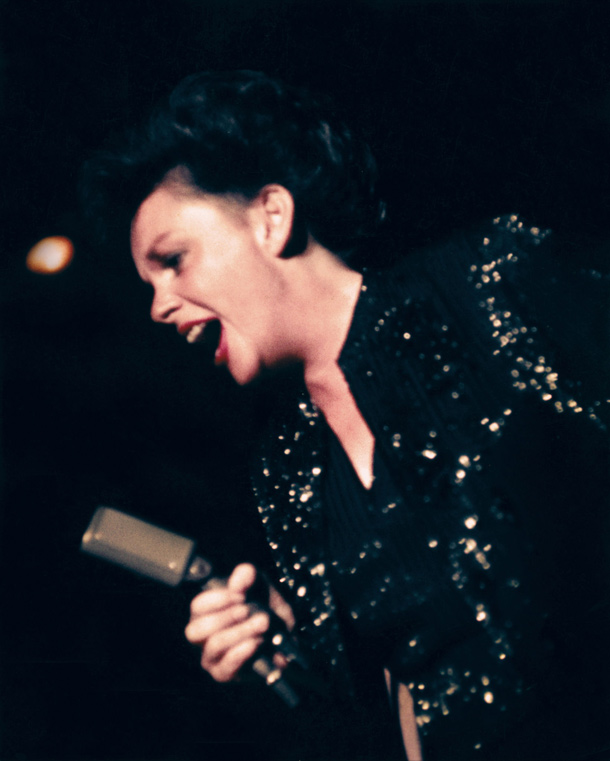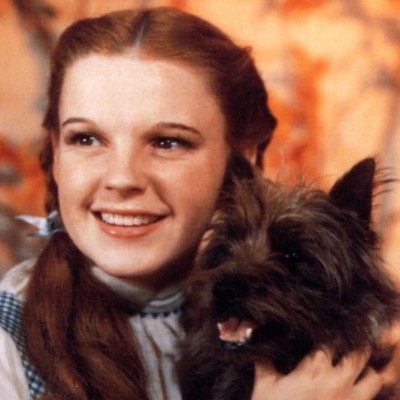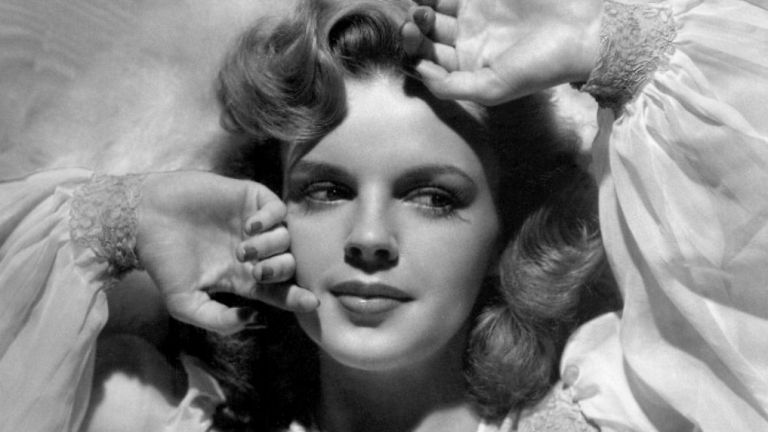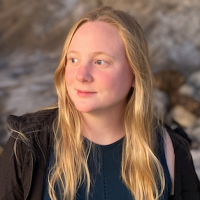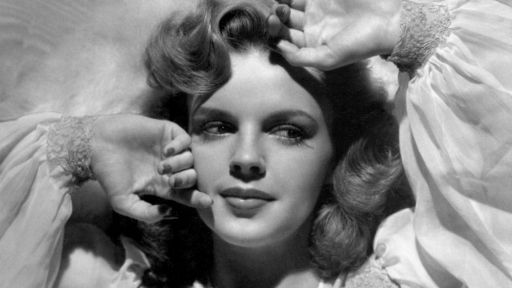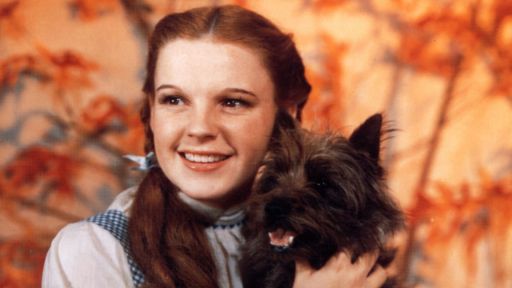“Toto, I’ve got a feeling we’re not in Kansas anymore,” Dorothy Gale once famously said in “The Wizard of Oz.”
The actress Judy Garland was just 16 when she starred as the sparkly shoe-wearing Dorothy in the award-winning film, and she crash-landed into a new life of fame with as much force as the iconic character she played on screen. Like Dorothy, Garland’s black-and-white world had turned into vibrant, blinding color. “The Wizard of Oz” transformed this Minnesota-born teen into a Hollywood sensation, practically overnight. It wasn’t all glitz and glam for the actress, though. For much of her life behind the scenes, Garland was quietly suffering.
Garland’s life was marred by tragedy, from beginning to end. Here are five surprising facts about the star’s troubled life:
1. She started performing at age 2.
Garland was born Frances Ethel Gumm in Grand Rapids, Minnesota in 1922. The youngest of three sisters, she was thrust into a life of singing, dancing, and performing alongside her siblings from the time she was a toddler. Her father Frank owned a local movie theatre, where his children would sing and dance before shows. Her mother Ethel, a vaudeville performer, played the piano for the performances. Garland would spend the remainder of her life yearning for her early years in Minnesota. “As I look back on it,” she said, “the first four years of my life were the happiest I ever had.”
Behind the scenes though, this seemingly perfect musical family had its troubles. Frank regularly cheated on Ethel with young men, and Ethel responded by throwing herself into her daughters’ careers. She wanted them to be big time stars – and would do whatever it took to make that happen. When Garland turned four, the family traded their snowy Minnesota townhouse for a new home in sunny Lancaster, California. Everything changed at that point.
“From the day we arrived in Lancaster all the wonderful carefree fun and joy in my family began to vanish,” Garland remembered. “Suddenly mother decided we had to be stars. She started to drag us to anyplace someone important might see us.”
By age 7, she was performing with her siblings as a part of “The Gumm Sisters” night after night. In “Judy Garland on Judy Garland: Interviews and Encounters,” edited by Randy L. Schmidt, Garland laments, “The only time I felt wanted when I was a kid was when I was performing.”
2. MGM destroyed her self esteem though forced diets and pills.
“The Gumm Sisters” caught the attention of songwriter Burton Lane in 1935, when Garland was 12 years old. He was immediately struck by the young girl’s singing voice. She sounded more like a woman than a child, with a loud, booming voice that commanded the room. Lane told Louis B. Mayer, of Metro Golden Mayer studios, about the young actress, and at age 13, she was signed.
Six weeks later, her father passed away from meningitis. Garland, who loved her father dearly, was crushed. Now, she was stuck with an obsessive stage mom and a studio who cared only to profit off of the young actress, instead of nurturing her. “The studio became kind of a surrogate parent,” she explained. “My mother would threaten me: ‘Be good or I’ll tell Mr. Mayer.'”
When she booked “The Wizard Of Oz” three years later, Garland practically became a captive of the studio. They controlled what she ate, when she slept, and how often she worked. They were determined to create a picture-perfect teenage star, and ridiculed Garland for not being fit or pretty enough to make it on the silver screen. “Mr. Mayer called me his little hunchback. Said I looked like a fat monster, so orders went down to commissary. ‘Whatever Garland ordered, give her chicken broth’.”
The pills began after the unprecedented success of “The Wizard of Oz.” MGM had Garland working on two movies at a time, rehearsing for one while she shot the other. She spent long, tiring days at the studio. It was hardly sustainable for the teenager, so to keep her from passing out, they fed her and her castmates amphetamines, or “pep pills.” “They’d give us pep pills to keep us on our feet long after we were exhausted then they’d knock us cold with sleeping pills, then after four hours they’d wake us up with pep pills again. That’s the way we worked and that’s the way we got thin. That’s the way we got mixed up and that’s the way we lost contact with the world.”
3. She was forced to terminate a pregnancy.
At 19, Garland eloped with her first husband, composer David Rose. MGM did not want their teenage starlet to marry, so she did so in secret – determined to steal back some of her robbed independence. “Nobody should be married at nineteen, although you couldn’t make me believe it then. But it took me six years to convince movie people I wasn’t permanently 12-years-old wearing my hair in pigtails.”
While the studio had no choice but to tolerate the marriage, they refused to allow the pregnancy that quickly followed. Neither did her controlling mother, or her new husband. Garland had no power over the three most demanding forces in her life. “My mother told me, ‘You can’t have this baby.’ Well, I was stunned. I said, ‘It’s mine, I have to have it’.”
She was taken to a “shabby little office outside Los Angeles, and that was that. The marriage was never the same. I was despondent. I didn’t want to make a botch of my relationships with people. The only thing I did well, it seemed, was work. And the regiment at Metro wouldn’t let me stop working long enough to be really married. They still regarded me as their personal property.”
4. She was happiest when she was performing on stage.
Garland was crushed under MGM’s iron fist. After years of neglect, depression and addiction, the studio terminated her in September of 1950. At just 28 years old, she was chewed up and spit out by the studio that created her.
She reclaimed herself by going back to her roots: vaudeville. She began performing in London and was an instant triumph. For the rest of her life, in and out of the movie scene, she would return to the stage again and again.
Garland belted out her hits for her adoring audiences, and soon, crowds would line up in the rain just to score tickets to see the starlet sing. Garland thrived on the affection of her fans, and relished in the control she had over the stage. “It was like being reborn. I heard that applause and I realized, I’m not finished. I’m still Judy Garland.”
5. She is a gay icon.
In 1967, The Advocate named Judy Garland the “Elvis of homosexuals.” As a stage performer, she drew in masses of gay male supporters, who screamed along to the singer’s music, and fought to touch her hand on stage. When asked at a San Francisco press conference if she minded having such a large gay following, she responded, “I couldn’t care less! I sing to people.”
Over the years, many have tried to understand Garland’s influence on the gay community. In the 1960s, Time Magazine even interviewed a slew of psychologists to try to figure it out. Many seem to think it’s because Garland had spent so much of her life in tragedy. In a 1969 article, Esquire wrote, “Homosexuals tend to identify with suffering. And so does Garland.” Still, this problematic assumption underestimates just how much the icon resonated with an entire community.
The phrase “Are you a friend of Dorothy?” became a safe invitation for gay men to talk about their sexual orientation, when being gay was not only socially unacceptable, but illegal. In “The Wizard of Oz,” Dorothy is kind to those who are different. She’s a friend to all who need one.
Queer historian Dr. Justin Bengry told the BBC, “It’s important to ask: for whom is Judy Garland resonant, important and iconic? It seems to be a significant category of gay men, in particular, who are invested in celebrities or the camp aesthetic that Garland embodies. But it’s also important to recognize that they aren’t the totality of gay men.”
Garland helped many gay men to understand their own version of the world, and to love themselves unapologetically. She was a survivor, doing her best to assert control in an industry that too often rejected her. In the ’60s, gay men struggled to survive in a world that worked actively against them, and many felt they could relate to Garland’s story. On the day of Garland’s funeral, gay men gathered on the streets to publicly mourn for their beloved icon.
Garland never stopped performing. Even on her hardest of days, the stage seemed to breathe life into the star. It was where she thrived and could be free to express herself fully. Audiences relished in her performances. They loved her in an honest, unselfish way that those closest to her failed to do.
“I would like audiences to know I’ve been in love with them all my life. And I tried to please. I hope I did.”
***
Bibliography:
Garland, J., & Schmidt, R. (2016). Judy Garland on Judy Garland: Interviews and encounters. Chicago: Chicago Review Press.
Brody, R. (n.d.). Judy Garland’s Hollywood UNRAVELLING, through the eyes of her husband and Producer Sid Luft. Retrieved February 13, 2021, from https://www.newyorker.com/culture/richard-brody/judy-garlands-hollywood-unravelling-through-the-eyes-of-her-husband-and-producer-sid-luft
Haynes, S. (2019, September 26). The true story behind the movie Judy. Retrieved February 13, 2021, from https://time.com/5684673/judy-garland-movie-true-story/
Judy’s life. (n.d.). Retrieved February 13, 2021, from http://www.judygarlandmuseum.com/judys-life
Kaufman, A. (2019, October 21). Judy Garland’s life was run by men. these newly Unearthed RECORDINGS reveal how. Retrieved February 13, 2021, from https://www.chicagotribune.com/entertainment/movies/ct-ent-judy-garland-sid-luft-recordings-20191021-hred6gyobjdxtlecxwf2xjnrze-story.html
Why is Judy GARLAND the ultimate Gay icon? (n.d.). Retrieved February 13, 2021, from https://www.bbc.com/culture/article/20190923-why-is-judy-garland-the-ultimate-gay-icon

